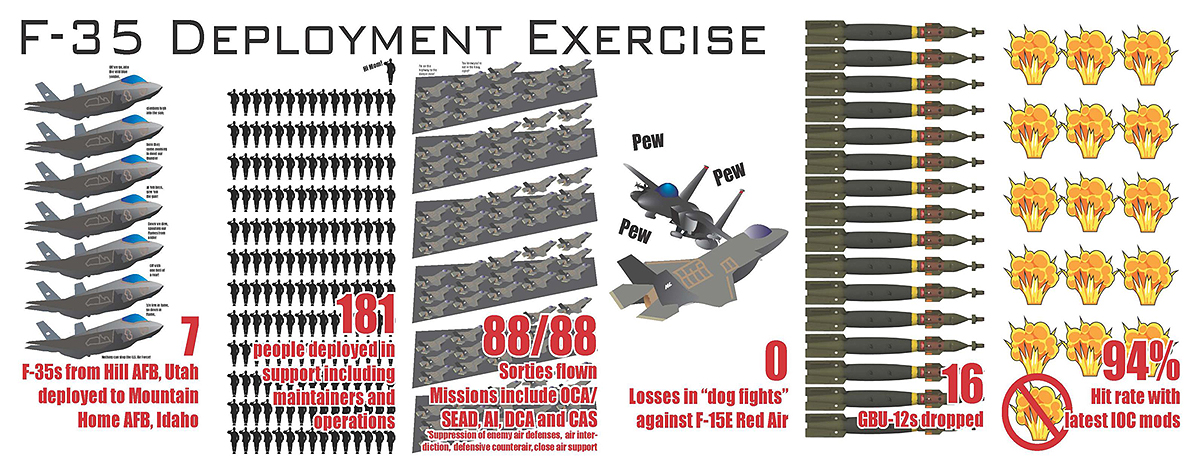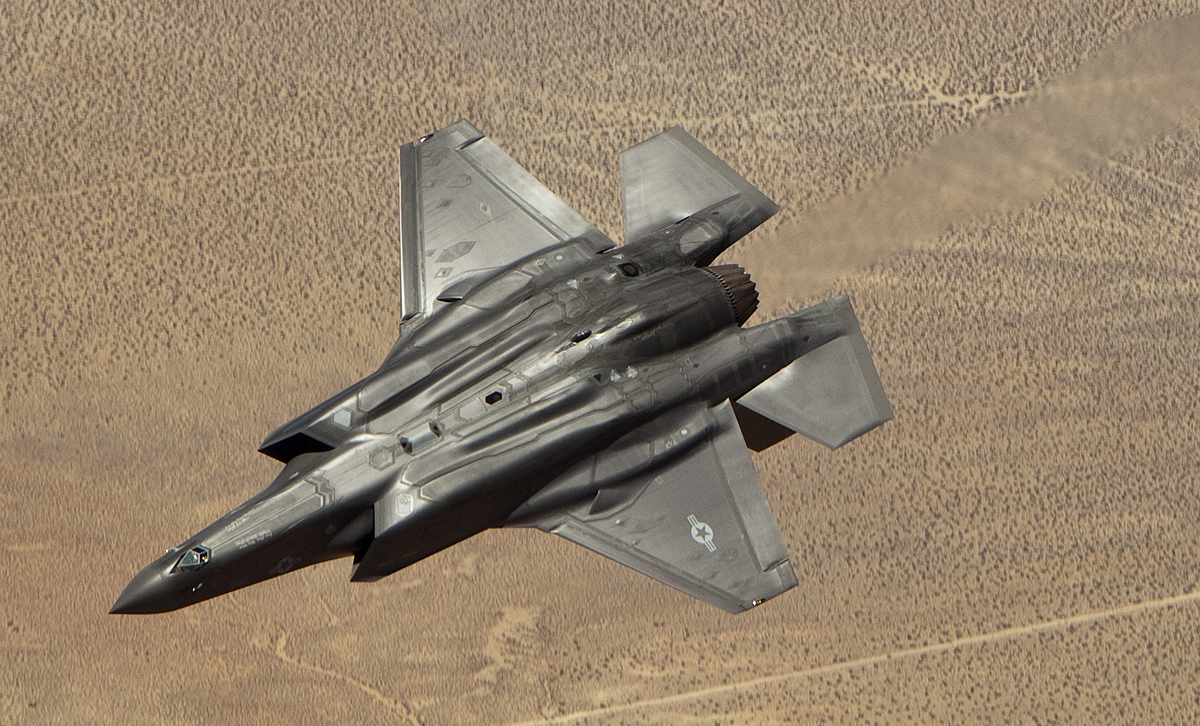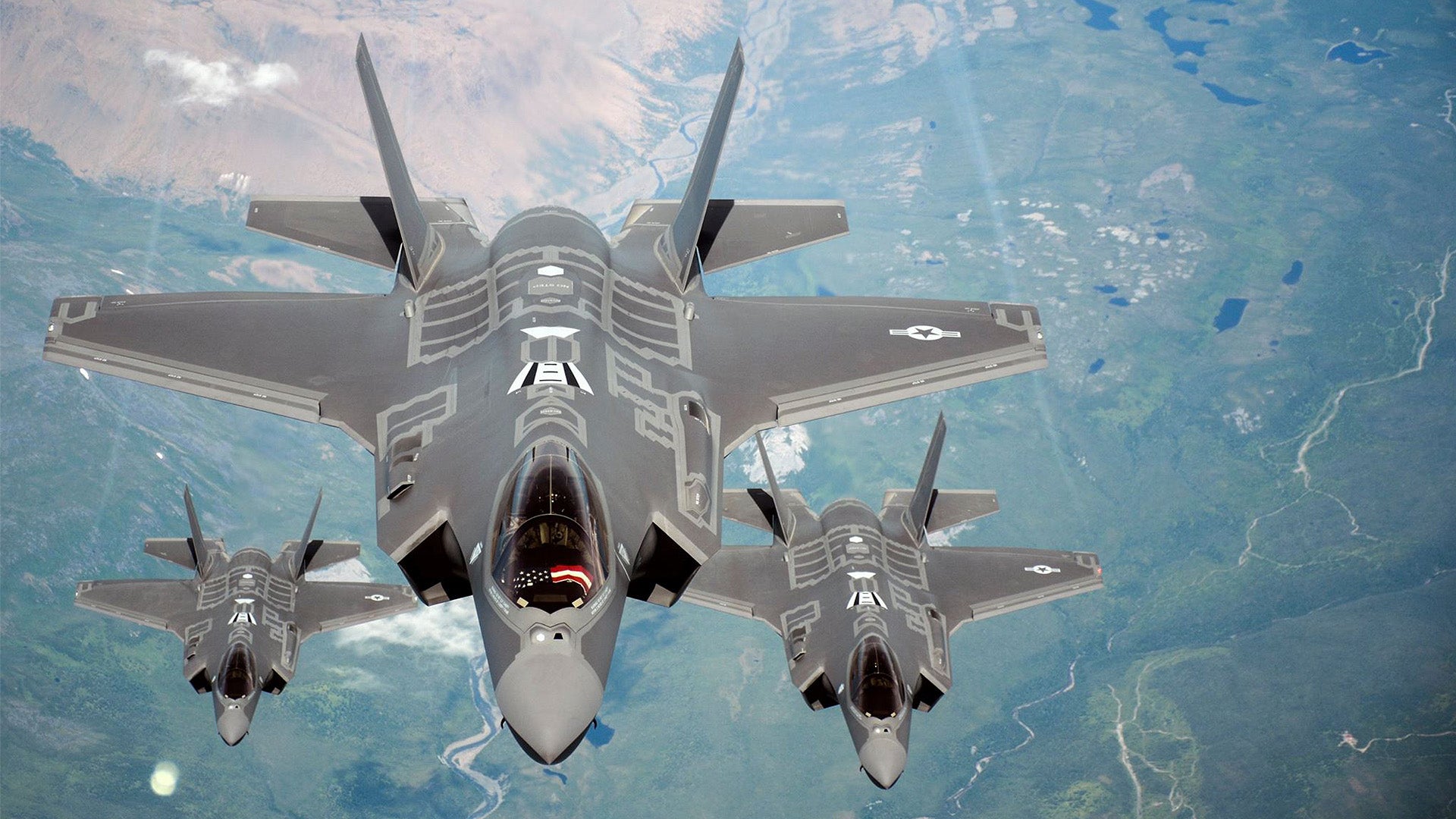On August 2nd, the USAF finally declared Initial Operating Capability (IOC) for a Hill AFB-based squadron of its growing fleet of F-35As. It’s been 15 years since Lockheed was awarded the contract to produce the F-35, and a decade since it first flew.
The milestone is a big one for both Lockheed and the USAF, and builds on a ton of media hype the jet got after it crossed the Atlantic and landed in the UK for the first time. But the F-35 program has chronically shared an absurdly bright view of the F-35’s progress, even though the facts have suggested otherwise. Case in point: the Marine’s declaration of IOC on their F-35Bs last year following a major shipboard test that supposedly went glowingly. We found out months later that it went anything but.
How the F-35 actually performs in the field, both in terms of reliability and combat effectiveness, also remains unclear, with only anecdotal evidence and seemingly cherry-picked facts offered for public consumption.
Obviously the jet, which packs low-observability and an avionics suite that provides unprecedented situational awareness, should be able to vanquish other aircraft and ground-based threats that were developed decades ago. Yet exactly how good it is at getting off the ground so it can enter the fight remains questionable. It’s commonplace for major weapons programs to “stack the deck” to a certain degree during early trials via flooding squadrons with spare parts and having contractors on hand to fix any issues.

The reality is that the F-35, under the damning auspices of “concurrency,” was put into production and has now been pushed to operational status long before testing has concluded. In fact, the jet has not even started operational testing, which has been pushed back to early 2018.
Additionally, after many delays the USAF lowered the bar for what it considered the minimal capabilities to be considered operational, in order to claim this critical milestone as early as possible. This mainly has to do with opting to go operational with Block 3i software loaded onto the jets instead of the much more comprehensive Block 3F software that was long envisioned as the minimum threshold for declaring IOC.

So when will the F-35 see action, or at least a deployment overseas? I would predict it will be far sooner than most would assume—though this is not indicative of the aircraft’s developmental state. The F-35B will sail from Japan aboard a Helicopter Landing Dock in 2018, which right now is the first slated actual operational deployment of any F-35 variant. The Air Force, on the other hand, may toss the F-35A into the European, or even the anti-ISIS, conflict far sooner.
“’I would like to deploy it to both the European and the Pacific theater in the not-too-distant future, so I would say within 18 months I think I’ll try to get to both those theaters,’ said ACC commander Gen. Herbert Carlisle, adding that if U.S. Central Command asks for the F-35 in the Middle East, he would send it in a heartbeat.”
Whether any of this is a good idea is debatable, but considering the jet has yet to go through its operational test plan and has a limited list of weapons it can employ, it seems like doing so would be a PR move more than anything else.
Then again, just as I’ve predicted for years, declaring IOC with the aircraft still so immature is really just that, a PR move, and I’m not the only one that thinks so. Last year, POGO came to the same conclusion about the Marines seemingly unsubstantiated F-35B IOC milestone:
“The read on Congress from Maj. Gen. Tod Wolters, [from the] Air Force Legislative Liaison Office, was that there was more support overall for an early declaration in [calendar year] ’16 as opposed to sticking to Block 3F with a CY ’18 declaration. These opinions came from the negative connotation with having over 180 F-35A aircraft parked on runways without IOC and also being two years behind the Marine.”
Pogo continues: “…to meet a deadline that Congress found acceptable, the Air Force decided to debut F-35s that it knew full well wouldn’t actually be combat-ready in any meaningful sense of the term. In May 2013, the flying branch submitted its F-35 IOC date to Congress and then, according to the history, began the tense wait to see if the JSF program could fulfill its promises over the next three years.
“Traditionally, declaring IOC has depended upon completing combat-realistic testing, as was the criteria for the F-22’s IOC declaration in 2005…The Marine Corps admits the ‘initial’ deployments are several years down the road. F-35Bs will not be deployed to Okinawa until 2017 at the earliest, and won’t be deployed on amphibious assault ships until 2018.”
Pogo concludes, “…it’s clear that the F-35B’s IOC declaration does not establish that any necessary combat capabilities have actually been achieved. It simply establishes that the Joint Strike Fighter Program Office and the Marine Corps were doggedly determined to reap the public relations benefits of meeting their artificial IOC deadline—even if in name only—no matter what.”

Although the F-35 has made progress over the last year, it’s being declared operational under discounted requirements and there is still a long road of testing and development ahead—as well as many remaining problems with the aircraft to solve.
Contact the author: Tyler@thedrive.com
